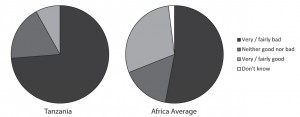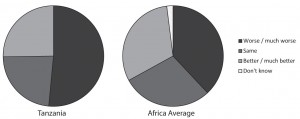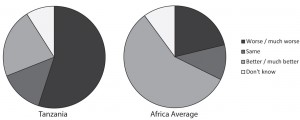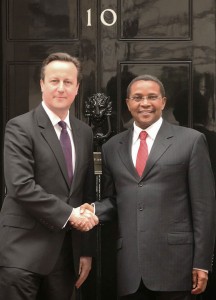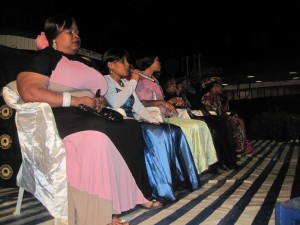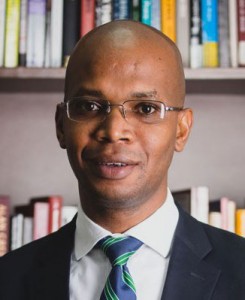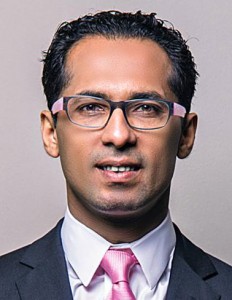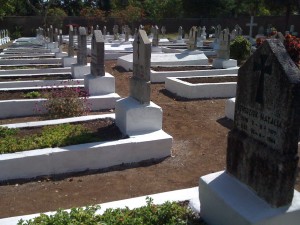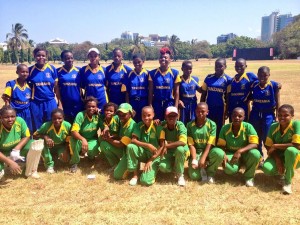by John Cooper-Poole
SURGEON OR JACK-OF-ALL-TRADES? A Mission Doctor in Tanganyika 1949 – 90. Marion Bartlett MB FRCS. Published by Words by Design, ISBN 978-1-909075-13-9(colour), ISBN 978-1-909075-14-6 (b&w): £19 (colour) or £12 (b&w) + p & p £3. Order online from www.lulu.com/wordsbydesign, or through Revd Timothy Fox, 40 Lakeber Avenue, Bentham, Lancaster, LA2 7JN. (Please make cheques payable to ‘Marion J. Bartlett’). Email: editimfox@btinternet.com
Tales of missionary heroism are unfashionable; they refer to a time when sacrifice, commitment and an unquestioned loyalty to a disciplined way of life were expected and accepted. While describing a lifestyle familiar to missionary personnel and their supporters, such narratives threaten current mission agencies. While accepting the importance of aid programmes, local development and self-sufficiency, nothing can justify the loss of the personal partnerships which informed and inspired personal and church commitments, generated finance and fostered vocations. So this book is both an inspiration and a reproach. Combining loyalty both to the Hippocratic Oath and to her personal beliefs, Marian Bartlett writes that medical services “must be open to all, of whatever creed or colour, and with no ‘preaching to captive audiences’ or other unfair pressure towards conversion”. The book records the story of two people doing the ordinary things of missionary life extraordinarily well.
While appealing to anyone who has worked, or supported work in East Africa, overseas medical programmes, or UMCA or USPG, it is essentially a personal story of one woman’s work, ministry and life, shared from 1967 with her husband David, a long-serving priest in the diocese of Masasi. I knew both Marian and David, before they were married, and later who could forget their hospitable Sunday suppers? The narrative reflects the personality of its author, remembered always as a calm presence regardless of external chaos, focused and dedicated.
More widely it adds an important perspective on the impact of independence on voluntary agencies at a time when educational and medical work were being handed over to government departments and, contrary to popular assumptions, a creative and increasingly important partnership was being developed. It says a lot for the new government that it felt secure enough to build on structures, established by foreign agencies and using the skills and experience of existing staff. It also says a lot about the grace and commitment of the voluntary ethos that the transition was so successful. The book makes a serious contribution to the literature of developing Independence.
The book also indicates the significance of links between Tanzanian and British dioceses – a valuable expression of partnership allowing former supporters to maintain relationships of prayer, mutual support and practical engagement.
Of course I have a few criticisms; the use of apostrophisation of Swahili vocabulary, the questionable use of Tanganyika in the title, the episodic nature of the later pages, but these reflect editorial preconceptions and preferences and should be disregarded in the overall heroic tale of a life, of two lives, totally committed to the tasks they confronted in God’s mission through the church in that unique part of Tanzania, Masasi.
David Craig
MARA! Africa bridges the gap between Church and Life; Bill Jones, Aliquid Novum, 2013, p/b 213 pp, ISBN 978-0-9926806-0-2 £10.99
This handsomely illustrated book is the story of the Anglican Diocese of Mara, situated between Lake Victoria and the Serengeti. From its creation in 1985, its twelve parishes have become 135, and the one diocese has become three. The author writes from his experience of developing its link with the Diocese of Wakefield, England.
Mara’s first priority is ‘Evangelism’. But the way this is implemented differs sharply from the way it is often understood in England. Christians in Mara do not worry about how to get people into church. On the contrary, the church gets itself involved in life outside, with its problems and opportunities.
So the church asks: ‘Where are you now? Where do you want to be? How can we get there – together?’ Think of the characteristic challenges of Tanzanian life: agriculture and animal husbandry, malaria, HIV-Aids, clean water, nutrition, health, education, disabilities, gender issues, and much more.
All these form the church’s agenda. It has departments to embrace all these facets of life, led by laity as much as clergy, by women as much as men. The church brings ideas and experience. It shows people how they can do it – for themselves – in ways that are local, sustainable and accountable. The problems are discussed with those who face them. For example, secondary school girls are expected at home to spend time not with homework but with pots, pans and 1001 other ‘women’s’ jobs. So Mara is building a new Girls’ High School where they will board and so get a better chance in life.
The church does not ask people to change their religion or give money. But people see what it is doing and ask ‘Why?’ Before long they may say, ‘Could we do that here?’; ‘Can we be Christians too?’ Then the Church Planting Department responds by sending a team to visit and teach. If they are well received, an evangelist may go to live there, supported by the Diocese. A growing group of Christians may want a pastor and eventually a building. It is up to them, but the Church is essentially people, not structures.
The Church in Mara has become a mini welfare state, widely appreciated and motivated by love for God and neighbour. The phrase most commonly heard in Mara is Bwana asifiwe (Praise the Lord)! Out of gratitude, they aim to transform lives, their own and others’. But where does the money come from? Partly from overseas partners; partly from income-generating projects; essentially by self-reliance, as Nyerere, born in the region, taught us all. But Bishop Omindo says that often he just does not know. If they feel sure God is leading them, they start a new project and slowly, as they pray, funds materialize.
Members of the B-T Society know how much small sums achieve in Africa. But this book describes a two-way partnership. We get at least as much from Mara as they get from us. Tanzania is now Africa’s third biggest producer of gold, mined in Mara and elsewhere. How, asks Chapter 15, are Tanzania’s peasants affected for good or for bad by the extraction of this colossal wealth from beneath their feet? This topic warrants another book, as does the big question: In what pressing issues of life should Churches get involved – and how – if they are once again to have a transforming impact in our world?
Roger Bowen
MINING AND SOCIAL TRANSFORMATION IN AFRICA- Mineralizing and Democratizing Trends in Artisanal Mining. Edited by Debora Fahy Bryceson and others. Routledge 2013. ISBN 978 0 415 833707, h/b 217 pp. £80.
This collection of eleven research papers on artisanal mining in Tanzania represents a most welcome addition to the literature on mining in Africa. Its theoretical frameworks for artisanal mining also have possible relevance in other parts of the developing world. Unlike most studies of artisanal mining (AM) with their focus on matters such as conflicts with large-scale mining, legal arrangements, environmental side effects and the like, this work drills down minutely into the social and cultural changes that are associated with the growth of AM. It develops an important central proposition that growing settlements of artisanal miners result in new shared economic and social norms including occupational norms and codes of conduct designed in large part to address the endemic risks in artisanal mining activities. A parallel proposition is that this process of change also has strong democratizing tendencies but that it can distance the artisanal miners from the established arrangements in the agrarian economy and from those in both mainstream and traditional governments.
The Introductory paper by Bryceson and Jesper Bosse Jonsson concisely outlines the main lines of the argument and also the Tanzanian historical and mining backgrounds. Part I in five chapters probes the motivations of the Tanzanian artisanal miners as well as their migration patterns, their career progressions and their family and gender relations within newly establishing AM settlements. Chapter 4 on the sexual mores and gender relationships and Chapter 6 on mining, magic and murder in Sukumaland provide fascinating insights about how traditional practices (e.g. the use of “healers”) have been amended by the social dynamic introduced in newer settlements of artisanal miners.
Part II in four chapters looks at the institutional arrangements in AM settlements to address matters such as ethical trading arrangements, and the distribution of product and of returns. Chapter 7 by Jonsson and Niels Fold starts from the proposition that top-down policy approaches to “embrace” AM have failed globally and have certainly been very inadequate in Tanzania. The authors claim that this is partly because the AM industry is far less tidily structured than is assumed by most mining legislation, such as Tanzania’s new Mining Act of 2010. Their argument provides extremely valuable evidence to back this up.
Part III is a single chapter by Bryceson and Eleanor Fisher assesses the possible future contributions of AM in Tanzania and elsewhere. Their central argument is that artisanal miners cannot be stereotyped in the manner often employed as “adventurers transgressing the boundaries of acceptable society” but as groups with the potential at least to “uplift their local communities and stimulate democratic principles” (pg179). As one part of a many stranded argument to develop this central proposition, the authors point to the potential advantages of AM (relative to large-scale mining) in averting the so-called “mineral resource curse” which in so many ways is inimical to democracy. But here they tantalize by not really addressing the central question of how large-scale mining (crucial in Tanzania for the huge investments needed for deep and other complex mineral extraction) can best co-exist with the potentially expandable AM sector (with its own positive characteristics of much higher levels of job creation and superior democratizing tendencies). Further since both large-scale mining incursions and expanding AM create deep, but different patterns of social and cultural change, how can the two together co-exist with the prevailing mores of an established agrarian economy as well as with traditional mainstream governance arrangements which themselves may often be only weakly “democratic”?
Overall this is a scholarly, well –structured, clearly written, and very interesting volume which should be essential reading for anyone designing policy for artisanal mining in countries such as Tanzania.
Alan R. Roe
LETTERS FROM EAST AFRICA; Christopher Gallop, Grosvenor House Publishing, 28-30 High St, Guildford GU1 3EL; ISBN 978 1 78148 628 3, p/b 232pp
It must be hard for the younger generation to imagine a time, a mere half century ago, when immediate communication with family and friends across the globe, was virtually impossible – no mobile phones or emails. Certainly no Skype. Tearful goodbyes at dockside or airport could be a prelude to two or three years of separation with only those blue air letters to look out for when the postman called.
Christopher Gallop has made this period in post-colonial history very real by giving the reader an insight into correspondence between his parents during a short period in January 1964, which coincided with an insurrection in Dar es Salaam, later known as the Dar Mutiny. The author’s father, Robin, an export manager, was posted to Dar at this time to search out lucrative finance contracts in post-independence Tanganyika. Robin’s wife, Jill, and their young son Christopher (the author, then aged two), were to remain at home in England, chiefly because another pregnancy was underway.
Robin and Jill wrote lovingly to each other almost every day, her letters full of cheerful domestic detail: the “TV has gone mad tonight … the kettle also packed in … I mended it beautifully but have one mysterious screw left over… Christopher sends big, big hugs”. Robin in return would describe his new environment and daily routine: “the faithful Bunga appears with tea punctually every morning … the tea is a reddish glutinous stew, and the milk tinned”.
As Robin became involved willy-nilly in the army insurrection, he was concerned to let Jill know that he was all right, though not knowing what news if any had reached her. And, of course, the situation was unfolding on the ground all the time. The author, with hindsight, is anxious to give us a balanced assessment of what the insurgence was about, pointing out that for many Tanganyikans the pace of change since independence was not fast enough. Among the troops especially, it was felt that the British Officers in charge ought to go home, leaving Tanganyikans to run the show.
In Zanzibar a far more horrendous revolution was taking place, not only anti-Imperial but also anti-Arab. It is estimated that possibly 50,000 Arabs were killed. With things increasingly getting out of hand, Nyerere found himself in the invidious position of having to request help from the British Government. With the arrival of the Royal Navy, peace was finally restored and the Republic of Tanzania was eventually formed.
The author has interleaved his parents’ letters with helpful explanatory chapters. He also brings in his own early family memories including the sometimes tricky relationship he had with his parents. Jill, in her turn, also had problems with her parents whilst she remained in England. The book, sub-entitled a Brief Family Memoir, will also appeal to those interested in post-independence Tanganyika.
Jill Watson
BUSINESS, POLITICS AND THE STATE IN AFRICA. Tim Kelsall et al. Published by Zed Books. ISBN 978 1 78032 421 0; p/b pp190
Many countries in sub-Saharan Africa there have seen a significant improvement in their macro-economic performance since 2000, with Tanzania at the forefront. IMF figures show that real GDP growth averaged only 2.9% a year in the period 1991-2000, but in the decade 2001-2010 averaged 7% a year. After a very modest dip to 6.4% in 2011, growth quickly rebounded to around 7% in 2012 and 2013, and looks set to stay at this level in 2014.
For most economic observers, these are not just paper numbers. Anyone visiting Dar es Salaam and other major urban areas can see the new shopping centres, tower blocks, hotels and the increasing traffic congestion. It is most visible in Dar, and the anecdotal evidence is supported by the recently published 2011/12 Household Budget Survey.
But what does this mean more widely? Despite the talk of an emerging middle class, is this actually occurring and is the growth translating into sustained poverty reduction? And is this growth leading to structural transformation of the economies? It is this second question this book is really looking at. In particular, it asks whether countries have the political and state structures to implement a more comprehensive industrial policy to drive the type of transformation seen in East Asia in the latter half of the 20th century and to sustain growth over the next decade. Although the authors are broadly in favour of countries adopting a pro-active industrial policy, they are very aware of the problems that this approach can lead to – such as how to balance the potential benefits (rapid private sector growth) and pitfalls (monopolies and corruption).
The authors develop a model to show the best political structure for an interventionist industrial policy, which is likely to be most effective in countries characterised by developmental patrimonialism.
Centralisation Low, Time Horizon Short – Competitive clientelism
Centralisation Low, Time Horizon Long – Ineffective development state
Centralisation High, Time Horizon Short – Non-development kleptocracy
Centralisation High, Time Horizon Long – Developmental patrimonialism
While it is relatively easy to find periods when East Asian countries did follow this broad approach, the book arguably does not provide enough evidence to show where this model worked best . In order to examine which countries fit the model, the book draws on examples from Tanzania, Ghana, Ethiopia and Rwanda, with other examples in earlier chapters from Kenya and Malawi. For myself, the wide scope of the book is hugely interesting and the compare- and -contrast element highly illuminating.
In particular, the chapter on Tanzania is worth reading, as it is based on the work of Brian Cooksey and his vast knowledge of the country. The depth of anecdotal knowledge is something I really enjoyed, although for those of a more academic bent it may lack rigour. The balanced nature of the argument throughout the book is also clear in the discussion on the need for state intervention, and for the state to step aside, in the two case studies – the gold and horticultural sectors. The Tanzania chapter is summed up in a couple of lines in the conclusion: ‘Growth has been steady, and macroeconomic management, with a few blips, has generally been sound. However, the country seems stuck in a state of moderately high growth without entering take off, while poverty reduction remains poor. Recently there has been some progress in manufacturing, but it is too soon to say whether or not this will be sustained. We are inclined to be sceptical.’
Others are not as sceptical for sub-Saharan Africa as a whole. The Economist on 8 February ran a good summary – Manufacturing in Africa; An Awakening Giant. The drawback with this article, and some other research, is that Ethiopia is held up as a prime example of where this change is happening. Tim Kelsall argues in this book that Ethiopia, along with Rwanda, may well have the right political structures where real change is a plausible possibility in the coming years. As the chapter on Ethiopia concludes, the new manufacturing enterprises being set up in the country ‘have a reasonable chance of success and they will in time make a significant contribution to structural transformation which is lagging behind growth and poverty reduction’.
This focus on the importance of manufacturing in driving growth and structural change is hardly new – witness Roger Riddell’s book Manufacturing Africa (1990). The argument that Africa needs a manufacturing revolution – or at least a deeper structural transformation – to maintain the growth momentum is becoming more pressing. As the demographic transition really hits Africa in the coming decade, the young will need employment – and only the manufacturing sector can feasibly absorb the number of new entrants to the job market. This is the only option, but it seems the most likely at this point.
And this in turn takes us back to the questions the book tries to answer. What political structure can best foster this? And can enough countries get the ball rolling to give momentum to the whole continent? Can Tanzania be in this first wave? On balance, this book’s answer is ‘probably not.’ I suspect that this may well the case; but sometimes it can be better to be a late front runner in a long race.
David Cowan
RETURN TO ZANZIBAR. Roger Webber. Matador, ISBN 9781783061211 p/b 429pp
Roger Webber’s book opens with a map of Africa with a spider’s web of travel routes covering the whole continent, and I felt that I was in for a treat of travel.
Roger’s early life was spent in Zanzibar and his descriptions of the island and its history are wonderful. In the early days of East African Airways he flew between Zanzibar and Nairobi to attend boarding school and I was reminded of my own schooldays when he describes picking fruit to subsidise the monotonous diet.
Returning to a cold England, Roger was always thinking about a return to Zanzibar and his attempt at the overland route in the school holidays was thwarted by thieves who stole his belongings in Sicily. When he finally made his trip back, his account reads like a Boys Own Paper story. After qualifying as a doctor, Roger spent the next twenty years in the Solomon Islands before eventually returning to work in Mbeya.
Roger then goes on to describe his travels throughout Africa. His exploits cover 66 years and are truly amazing. His descriptions of the places he visits are very evocative and make this book a cracking read – and may keep you up late.
David Holton

